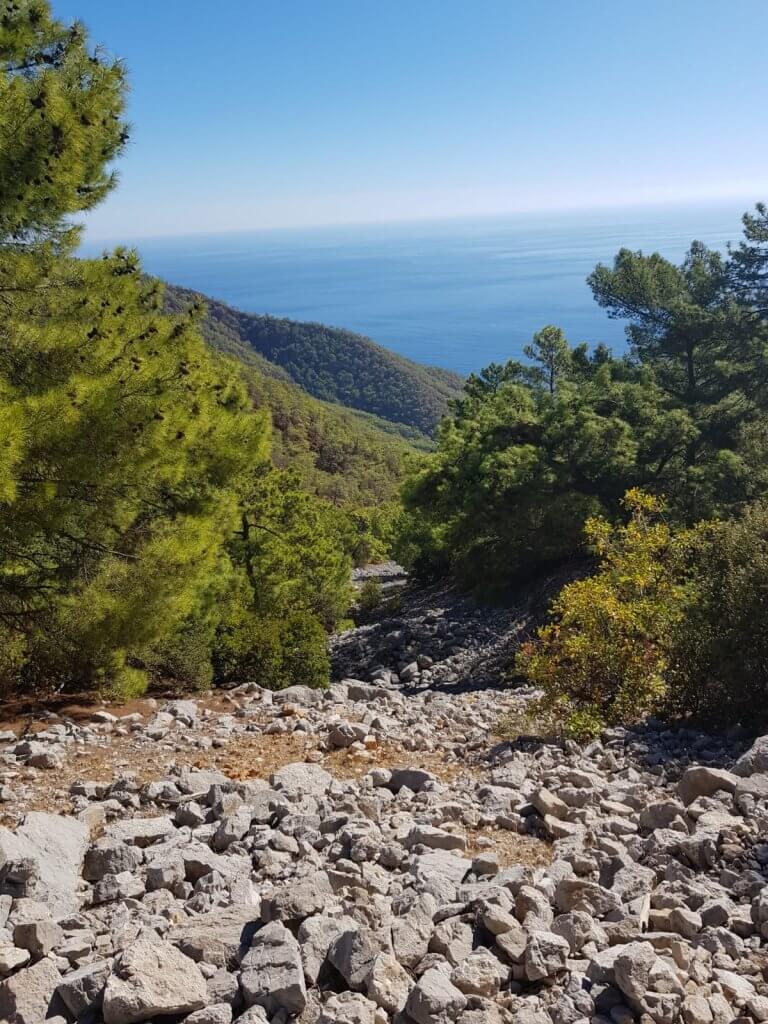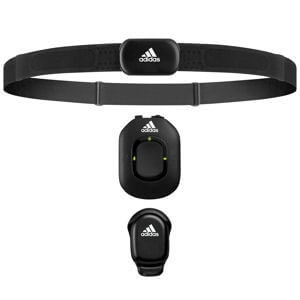
When we booked the 4 day walk I was thinking how lovely it would be to walk the “Turquoise coast” in the autumn sunshine as a sort of chilled out break away from the impending UK frosty winter. I certainly didn’t think it would be physically challenging, but I was very wrong!!
We were given a route map by a local company who arranged for our bags to be transferred by taxi to the B and B we would walk to each day. On the face of it the walks, although reasonably long (15-20km) didn’t look too challenging, but if you add bouldering, vertical climbs, picking your way through rock gardens, sharp shards of loose shingle underfoot and about 28 degree heat to the mix it suddenly takes a whole different look!
By the end of day one (after a 7.5hour ‘walk’, a twisted ankle, lots of blisters and a few crossed words) we felt toasted and fell into bed soon after we arrived. By the morning however, and after a very plentiful fill at breakfast, the pain of the previous day wore off and we felt able to tackle day 2. This was a walk up one side of a mountain and down again the other side; total ascent = 1000metres (again!!). We missed the entrance onto the path from the village so started the day with a climb up the rock face to hack into it 2 km down the path. It was exhilarating as it was stupid really, but anyway I am not sure we were in the mood for back tracking to cover extra mileage to start the ascent in the prescribed manner! We climbed all day until about 3pm and spent a couple of hours in the afternoon coming down again, the climb although difficult was actually less painful than the treacherous descent as the gradient was so steep and the ground so poor that the knees took an absolute hammering. Queue day 3; an undulating route taking us up and down 3 peaks of 200, 500 and 300 metres respectively – another 7+ hour day which was hotter than the previous 2 but somehow as we were over half way through and acclimatised both in the temperature and psychologically not as bad as it sounded. At points we chose to swim along the coast as oppose to walk where it was feasible on this portion but on the whole the day was good, possibly the best of the lot albeit a tough one. Day 4 was relatively easy, only covering 8km in total and most of the gradient was down hill, really an amble in comparison so we took advantage with as much swimming, and photographs as possible….
The 4 days were extremely tough, our legs took a battering and the blisters are still evident; our muscles took a couple of days to recover and walking has taken on a whole new meaning to me! Before we go again (which we have already vowed to) we will definitely do some physical preparation. For these kind of walks I am planning on a couple of months of long distance hiking once or twice a week in combination with: squats, deadlifts, lunges, Bulgarian lunges, side lunges, weighted step ups, single legged squats and a few plyo exercises in like wall balls, split jumps and some mountain climbers only because they are so aptly named!

